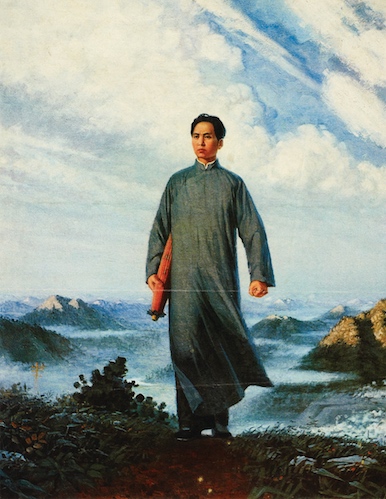8.3 China and the Koreas 🇨🇳 🇰🇵 🇰🇷
2 min read•october 29, 2020
Charly Castillo
Charly Castillo
AP Art History 🖼
34 resourcesSee Units
China and the Koreas
Architecture
Works of architecture like the Forbidden City, which is pictured below, were built to keep its royal residents away from the hustle and bustle (and potential danger) of the city 🏙️ At the center of the building is a courtyard, allowing people to go outside without having to leave the safety of their home. Its inhabitants lived in certain parts of the Forbidden City based on age (older residents lived in warmer parts, while younger ones lived in colder ones), which shows the application of Confucian filial piety 👵 in real life. Life in China, both in the past and present, revolves around this Confucian belief, which says that people should obey their elders as a way of respect.

Image Courtesy of Wikipedia (CC BY-SA 3.0). Forbidden City.
Sculpture
Sculptures in China and the Koreas are meant to show importance, whether that be through the media (materials) used to make them or the sheer size and number of them. The Gold and Jade Crown (pictured below ⬇️) is made from jade, which is notoriously difficult to carve and takes time to do, which shows that it was made for someone who was well-respected and of high status 👑 Below it are the Terracotta Warriors, of which there are 8,000 six-foot-tall statues, and they are placed in the tomb of a revered emperor named Shi Huangdi. Both of these works' forms and functions support the idea that sculptures in this area were made to show admiration and regard for someone.

Image Courtesy of Smarthistory. Gold and Jade Crown.

Image Courtesy of Global Volunteers. Terracotta Warriors.
❓Checking for Understanding: How do the Gold and Jade Crown and Terracotta Warriors depict importance?
Painting
Paintings from this area are unique because they come in different forms depending on their year of creation, from handscrolls (horizontal pieces of silk or paper 📃 used for painting) to color lithography (the process of making an image using a greasy substance and colored ink). Although they do have differences in form, both of the paintings below picture historical figures in a glorified way 💪that makes them seem powerful and gives their viewers a political message.

Image Courtesy of Khan Academy. Portrait of Sin Sukju.

Image Courtesy of Khan Academy. Chairman Mao En Route to Anyuan.
❓Visual Analysis and Cross-Unit Connections: Which work do you think is a silk handscroll, and which do you believe is a color lithograph? Support your answer using your knowledge of other works in the subset with these forms. (Hint: Nadar Elevating Photography to Art and Travelers Among Mountains and Streams)
Browse Study Guides By Unit
🗿Unit 1 – Global Prehistoric Art, 30,000-500 BCE
🏛Unit 2 – Ancient Mediterranean Art, 3500-300 BCE
⛪️Unit 3 – Early European and Colonial American Art, 200-1750 CE
⚔️Unit 4 – Later European and American Art, 1750-1980 CE
🌽Unit 5 – Indigenous American Art, 1000 BCE-1980 CE
⚱️Unit 6 – African Art, 1100-1980 CE
🕌Unit 7 – West and Central Asian Art, 500 BCE-1980 CE
🛕Unit 8 – South, East, and Southeast Asian Art, 300 BCE-1980 CE
🐚Unit 9: The Pacific, 700–1980 ce
🏢Unit 10 – Global Contemporary Art, 1980 CE to Present
🙏Exam Reviews

© 2023 Fiveable Inc. All rights reserved.